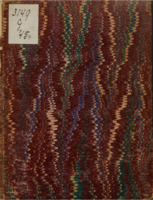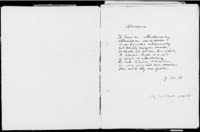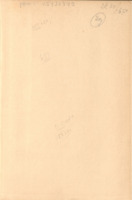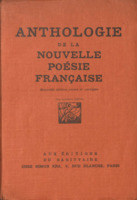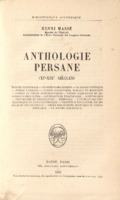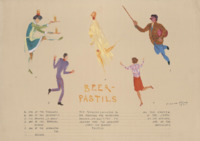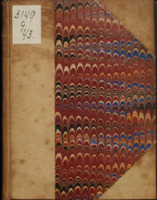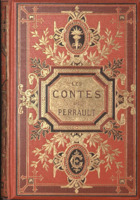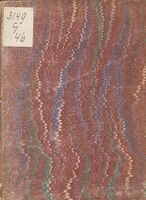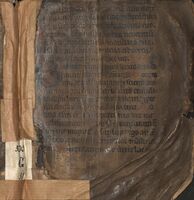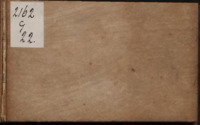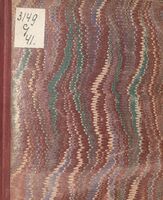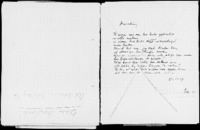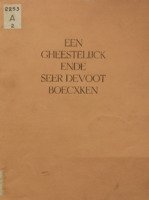Search
1 item set
-
Maastricht prints
Maastricht book printing began a century after Johannes Gutenberg invented the printing press around 1450. The first known printer in Maastricht was Jacob Bathen, who was active in the city from 1551-1554. Over the past 450 years, dozens of printers were active in Maastricht. Sometimes they worked individually; other times they were members of a true printer's dynasty.<br /> Think of Dufour and Roux, Leiter-Nypels and Boosten and Stols, but also Ezechiël Boucher, Hendrik Landtmeter and Fanny Bury-Lefèbvre.<br /> <br /> In the past centuries, hundreds of thousands of books must be have been printed in Maastricht. About 7,500 unique titles are preserved in the closed stacks of the Maastricht University Library, Center Céramique, the Historical Centre Limburg and the Centre for the Social History of Limburg. More than 1100 of these are part of the Special Collections of Maastricht University. The selection of books gives an impression of Maastricht's printing history. In addition, a digitised version of Brother Edgard Heynen's 1947-1948 bibliography is included.
384 items
-
An anthology of world poetry
Marginalia noted by Pierre Kemp and commented on by his biographer Wiel Kusters in the article "Pierre Kemp leest poëzie" in Kusters, W., Prick, H. G. M., & Jägers G. J. M. (1995). "Bladeren en lezen in groot verstaan" : Pierre Kemp in de wereld van het boek. University Press Maastricht etc.Author: Mark Van DorenYear of publication: 1934 -
Anthologie de la nouvelle poésie française
Marginalia noted by Pierre Kemp and commented on by his biographer Wiel Kusters in the article "Pierre Kemp leest poëzie" in Kusters, W., Prick, H. G. M., & Jägers G. J. M. (1995). "Bladeren en lezen in groot verstaan" : Pierre Kemp in de wereld van het boek. University Press Maastricht etc.Year of publication: 1927 -
Anthologie persane (XIe-XIXe siècles)
Marginalia noted by Pierre Kemp and commented on by his biographer Wiel Kusters in the article "Pierre Kemp leest poëzie" in Kusters, W., Prick, H. G. M., & Jägers G. J. M. (1995). "Bladeren en lezen in groot verstaan" : Pierre Kemp in de wereld van het boek. University Press Maastricht etc.Year of publication: 1950 -
Beschrijving van het oud en mirakuleus beeld van O. L. Vrouw van Maestricht, patrones der stad, onder den titel der Zeester, aldaar rustende in de kerk der Eerw. Paters Minderbroeders, thans in de parochiale kerk van den H. Nicolaas, vermaard door menigvuldige schoone Mirakelen alsmede van deszelfs oud en treffelijk Broederschap, verscheidene groote aflaten, en godvruchtige oefeningen
Author: Joannes De BoeckYear of publication: 1834 -
Cort begryp des levens vanden H. Servativs, eersten bisschop ende patroon van Maestricht
Cleyne getyden vanden H. Servativs bisschop van Maestricht ende patroon derselve stadtAuthor: Andries BouwensYear of publication: 1662 -
Daphnis et Chloé. Première Suite: 1. Nocturne.
Maurice Ravel’s 1912 Première Suite: 1. Nocturne (from Daphnis et Chloé) inspired Pierre Kemp to write his poem Gramophone DB 4930. Kemp’s record collection holds a 1934 recording by the Orchestre de la Société des Concerts du Conservatoire, conducted by Piero Coppola. -
Een Gheestelijck ende seer devoot boecxken : alle gheestelijcke menschen van noode
Author: Louis de BloisYear of publication: 1935

